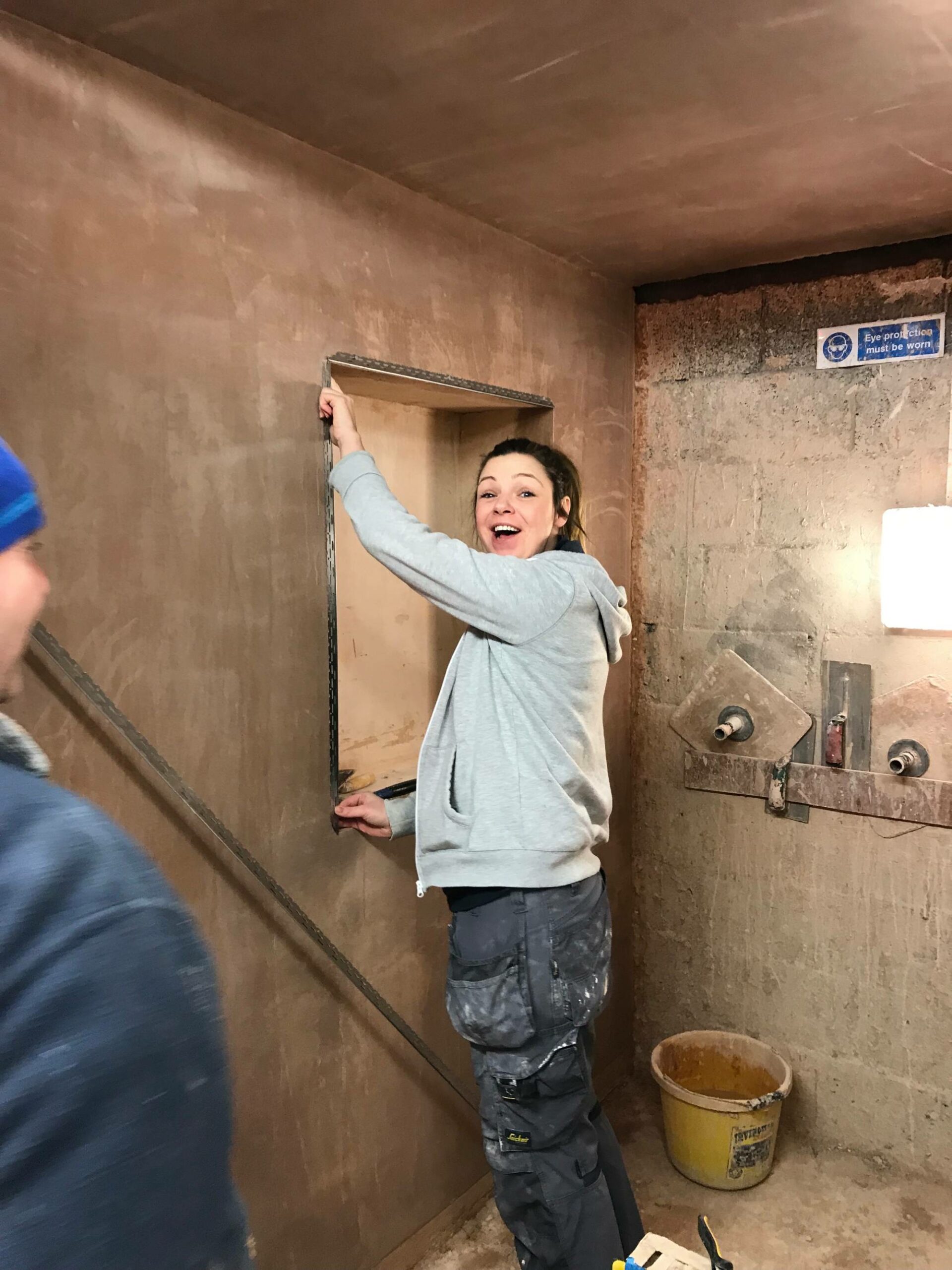Plastering Made Simple: Step-by-Step Overview for Beginners
Plastering Made Simple: Step-by-Step Overview for Beginners
Blog Article
Secret Tips and Equipment for Effective Gluing in your house Improvement Ventures
Attaining a flawless plaster surface in your house improvement jobs calls for a mix of the right tools and proven methods. Essential carries out such as the hawk and trowel are crucial for effective application, while proper surface prep work lays the structure for success. In addition, understanding the nuances of mixing plaster and applying it in thin layers can substantially affect the last result. As we check out these essential aspects, it becomes apparent that preventing typical challenges can boost your plastering abilities-- guaranteeing your following task not only meets however exceeds assumptions.
Essential Gluing Devices
A plasterer's toolkit is essential to attaining a durable and smooth finish on ceilings and wall surfaces. The crucial tools incorporate a variety of applies made to promote the gluing process successfully and efficiently. Secret parts include a hawk, which is a flat, square device utilized to hold the plaster while applying it to surface areas. This tool permits simple transportation and application of the material.

Furthermore, a blending container is essential for preparing plaster, making sure the best consistency before application. A gluing brush or sponge is helpful for completing touches and smoothing out textures. Finally, safety and security devices such as masks and handwear covers need to be consisted of to shield the customer from dust and chemicals. With each other, these crucial plastering devices make it possible for both experts and DIY lovers to attain high-grade cause their plastering tasks.
Surface Area Preparation Techniques
Appropriately preparing the surface before plastering is crucial for guaranteeing attachment and achieving a perfect coating. The primary step involves cleaning the surface area to get rid of any kind of dirt, grease, or old paint that might impede the plaster's capability to bond successfully. A comprehensive clean with an ideal cleansing solution is recommended, complied with by rinsing and allowing the surface to completely dry entirely.
Following, examine the surface for any type of fractures or flaws. These must be loaded with a suitable filler compound and permitted to heal according to the maker's directions. For permeable surfaces, applying a guide is necessary to develop a consistent structure and improve bond.
Furthermore, it is vital to ensure that the surface area is stable and structurally audio. Any type of loose products, such as flaking paint or damaged drywall, must be repaired or eliminated. If collaborating with stonework surfaces, take into consideration utilizing a scratch layer to enhance hold.
Mixing Plaster Like a Pro

Making use of a clean mixing container, put the water initially, then gradually add the plaster powder while mixing continually. This method assists to stop clumping and ensures an even distribution of products.
Once mixed, enable the plaster to relax for a few minutes to make it possible for the gypsum crystals to moisturize totally. This resting period enhances workability and minimizes the threat of cracking during application. By complying with these actions, you can blend plaster like a professional, setting the foundation for a successful gluing project in your home enhancement ventures.
Application Approaches for Smooth Finishes
With the plaster mix prepared to the optimal consistency, the next action entails choosing proper application techniques to accomplish a smooth surface. This device allows for a penalty, also distribution of plaster across the surface area while decreasing trowel marks.
Begin by using a generous amount of plaster to the surface area utilizing the trowel, guaranteeing it adheres well. Use a systematic method, working from the lower upward. Once the first coat is applied, make use of a sweeping movement to smooth the surface, using even stress. In locations that need more meticulous interest, take into consideration using a float, which can aid get rid of any type of flaws and create an uniform structure.
For the last touches, a wet sponge can be made use of to fine-tune the surface better. Lightly mist the plaster with water and delicately scrub the surface area to achieve a sleek effect. Constantly remember to work in little areas to maintain control over the application procedure, guaranteeing a smooth, specialist finish throughout your plastering job.
Usual Errors to Stay Clear Of
When embarking on a gluing job, preventing usual mistakes is important for attaining a remarkable finish. Guarantee that all dust, grease, and loose products are eliminated prior to applying plaster.
Another typical error is using plaster also thickly. Thick layers can crack as they dry, endangering the honesty of the surface. Instead, choose for several thin layers, permitting each coat to completely dry completely before applying the next.
Additionally, bad blending methods can lead to inconsistent structure and workability. Constantly comply with the supplier's instructions for mixing ratios and thoroughly blend the plaster to achieve an uniform uniformity.

Timing also plays an essential duty; plaster needs to be used while the substrate is wet to improve attachment. Top notch trowels and floats can make a substantial difference in attaining a smooth coating.
Conclusion
Effective smudging needs a complete understanding of important devices and methods. By making use of find more info appropriate equipment, making certain careful surface preparation, and sticking to recommended blending ratios, ideal outcomes can be accomplished. look at this now Using suitable application techniques further improves the coating, while awareness of typical mistakes can stop setbacks. Proficiency of these elements not only adds to the aesthetic charm of a room however also ensures longevity and durability in plastering jobs, making them integral to effective home renovation endeavors.
A float is an additional critical device, which aids in leveling the plaster and achieving a consistent surface area.

By complying with these actions, you can blend plaster like a professional, establishing the structure for an effective smudging job in your home enhancement undertakings.
Gently haze the plaster with water and carefully scrub the surface to accomplish a refined effect.
Report this page